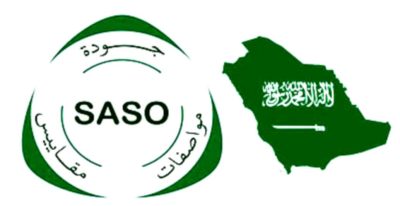How To Import LED Lights To Saudi Arabia
Unlocking the gateway to one of the most promising markets in the Middle East, navigating the process of importing LED lights to Saudi Arabia has evolved considerably in recent times. Gone are the days of straightforward certifications, as the Kingdom now embraces a more sophisticated and stringent certification policy.
Saudi Arabia. Embarking on this journey, energy efficiency standards, along with crucial certificates such as the SASO, SIRC, CB, IECEE, and SABER, will be our guiding beacons, ensuring a seamless and compliant passage into this burgeoning market.
In this illuminating article, we shed light on the essential steps involved in obtaining the necessary certifications for importing LED lighting products to Saudi Arabia.
Understanding Saudi Arabia’s Evolving Certification Landscape

Understanding Saudi Arabia’s evolving certification landscape is crucial for successfully importing LED lights to the Kingdom. The certification process may appear intricate at first glance, with acronyms such as SASO, SABER, and SIRC being involved. However, delving into the intricacies of these certifications is essential for a smooth import venture.
The Importance of SASO in Saudi Arabia’s Certification Landscape

The SASO, short for Saudi Arabian Standards Organization, holds significant importance as it formulates national standards for all products, including LED lights, entering the Saudi market. Compliance with SASO standards or their equivalents is mandatory for imported goods, ensuring they meet the country’s safety and functionality requirements.
In importing LED lights to Saudi Arabia, understanding the different types of SASO certifications and their importance is crucial. Here’s a breakdown of the main SASO certifications and their significance:
➔SASO 2870/2018. Covers energy efficiency and labeling requirements for lighting products with luminous fluxes between 60 and 12,000 lumens. It includes various lamps like incandescent, halogen, compact fluorescent, and LED lamps.
For importers dealing with general-use lighting products falling within this flux range, compliance with SASO 2870/2018 is essential to meet the energy efficiency standards mandated by the Saudi Arabian market.
➔SASO 2902/2018. Encompasses energy efficiency and labeling requirements for lighting products not covered by SASO 2870. It includes high-luminous flux lamps, fluorescent lamps, high-pressure discharge lamps, LED lamps, and directional and nondirectional integrated luminaires.
➔SASO 2927/2019. Focuses on energy efficiency, functionality, and labeling requirements for HID and LED lamps used in road and tunnel lighting. It also covers the LED drivers for these lights.
For LED outdoor lamps, complying with SASO 2902 requires obtaining the SIRC certificate. This involves acquiring the CB test report, CB certificate, and EER label, and submitting relevant materials to the SASO online certification system for review.
On the other hand, SASO 2927, mainly for road and tunnel lighting, demands additional test reports, including LM79 for lighting efficiency, photobiological safety reports, and performance tests (LM82, LM84, ISTMT) at high temperatures.
To achieve a successful importing process for LED lights to Saudi Arabia, it’s essential to comply with the specific requirements of the relevant SASO certifications.
SABER: Streamlining the Online Certification Process

SABER is an electronic platform devised by SASO that streamlines the online certification process for lighting products and shipments. Serving as a centralized repository, SABER efficiently manages data related to the Saudi Product Safety Programme and integrates with various key authorities involved in imports.
In the Saudi certification process, registering in the SABER system is mandatory. It provides the SC certificate for customs clearance and allows easy application for general conformity certificates for products and batches of goods, benefiting both importers and local manufacturers.
SIRC: The Indispensable SASO Recognition Certificate
For certain regulated products, the SIRC (SASO Recognition Certificate) is indispensable. To obtain the Product CoC (Certificate of Conformity) and Shipment CoC necessary for customs clearance, the SIRC is a mandatory prerequisite.
This certificate relies on valid IECEE (International Electrotechnical Commission for Electrical Equipment) Test Reports and Certificates, ensuring compliance with international standards.
CB Certification: Ensuring LED Lights’ Compliance for the Saudi Arabian Market
The Certification Body (CB) is vital for importing LED lights to Saudi Arabia, ensuring compliance with global safety standards set by the International Electrotechnical Commission (IEC).
The certified products must display a durable, waterproof nameplate. Both the overall product and key components require CB certification to avoid additional testing costs. Once CB certification and Energy Efficiency Ratio (EER) registration are obtained, applicants can proceed to apply for IECEE registration, such as the SASO Importer’s Registration Certificate (SIRC) for specific LED lights.
This streamlined process enhances market entry readiness and demonstrates a commitment to quality and safety for the Saudi Arabian market.
IECEE Registration for Lamps and Lanterns
Importers aiming for IECEE registration of lamps and lanterns need to provide essential information to the manufacturer. This includes three years of valid CB test reports and certificates, the importer’s business license in Saudi Arabia, the manufacturer’s business license, and comprehensive instructions in English and Arabic.
Notably, an IECEE certificate can cover multiple models, streamlining the certification process for importers handling various product variations.
Typically encompassing a duration of 15 to 20 working days, the application process for an IECEE certificate lays the groundwork for an entire year of validity, offering importers an extended period of compliance assurance for their LED lighting products in the Saudi Arabian market.
Important Things to Know to Achieve a Successful Importing Process to Saudi Arabia

Achieving a successful importing process of LED lights to Saudi Arabia requires thorough knowledge of the SASO Certification Conformity Assessment Programme. Here are the crucial steps and important considerations to ensure a smooth import venture:
●Be Knowledgeable of the SASO Certification. Familiarize yourself with the SASO Certification, which applies to all lighting goods imported into Saudi Arabia. Whether you are a manufacturer, importer, or distributor, compliance with SASO standards is mandatory.
●Obtain a SASO CoC. To clear your lighting products through Saudi Customs, you must obtain a Certificate of Conformity (SASO CoC) issued by an authorized inspection agency. This CoC validates that your products meet Saudi Arabia’s safety and quality standards.
●Lighting Product Testing. As part of the SASO CoC application process, your LED lights must undergo product testing, preferably conducted by a third-party testing lab. The tests should adhere to the International Standard IEC (60598) sections 1 and 2, covering performance, safety, as well as energy efficiency.
- Section 1:Thoroughly evaluate the safety facets encompassing electrical, thermal, and mechanical attributes of LED lights and components, encompassing aspects such as construction, wiring, heat and water resilience, endurance, and energy efficiency.
- Section 2:Perform meticulous product ‘type’ testing, precisely tailored to individual categories such as recessed lights, wall lights, and outdoor lighting fixtures.
●Labeling Requirements.Mandate that all imported lighting products bear an indelible indication label explicitly denoting their origin. This label serves as an essential mark of compliance for customs clearance.
●Energy Efficient Label (EEL).In order to obtain entry clearance in the country, every lighting product must prominently display a compliant Energy Efficient Label (EEL) as validation of its energy efficiency.
●Risk Categorization.Lighting products are categorized as high or low risk. Understanding the risk level early is crucial, as it determines the CoC and shipment inspection requirements.
●Compliance is Key.Failure to obtain the SASO CoC, affix a non-removable label of origin, or attach a compliant EEL could lead to serious consequences, such as goods being returned, financial penalties, or customs blacklisting.
By following these important steps and staying compliant with SASO regulations, you can navigate the importing process smoothly and successfully bring LED lights to the scintillating market of Saudi Arabia.
Streamlining Your LED Lighting Product Entry: 3 Essential Steps for the Saudi Arabian Market

1. Proactive Regulatory Conformity Evaluation
Initiate comprehensive evaluations right from the outset of your venture. This strategic approach allows you to ascertain that your new lighting product aligns flawlessly with mandatory regulatory requirements.
By identifying potential nonconformities early on, you can avoid unpleasant surprises and unwarranted delays during your product launch. Ensuring adherence to regulations from the onset is a pivotal foundation for a smooth market entry process.
2. Prototype Validation for Flawless Performance
Designing a new lighting product tailored for the Saudi Arabian market demands precision and forethought. To prevent last-minute setbacks and potential design flaws, conduct pre-testing on your early prototypes. This proactive measure empowers you to identify and rectify any issues before full-scale production commences.
By validating your product’s compliance with customs requirements through meticulous pre-testing, you can confidently proceed with certifications and customs compliance, streamlining the path to market readiness.
3. Comprehensive Customs Compliance Verification
If envisioning a captivating lighting product range for the Saudi Arabian market, undertake a comprehensive regulatory check before embarking on sales endeavors. This meticulous scrutiny ensures that your entire product range complies with the country’s customs regulations.
By addressing potential regulatory hurdles in advance, you can confidently proceed with your sales strategy, avoiding any unforeseen obstacles during the critical phase of product distribution.
Incorporating these three essential steps into your LED lighting product entry strategy for Saudi Arabia not only accelerates the market entry process but also reinforces your commitment to quality, compliance, and customer satisfaction.
Conclusion
Therefore, importing LED lights to Saudi Arabia necessitates scrupulous conformity to the dynamic SASO certification framework. Adhering to the rigorous standards of SASO 2870/2018, SASO 2902/2018, and SASO 2927/2019, while capitalizing on SABER and IECEE registration, guarantees a seamless entry into the Saudi Arabian market.
Prudent conformity evaluations, pre-testing, and regulatory verifications synergize to streamline the import process, underscoring an unwavering dedication to excellence and success.






